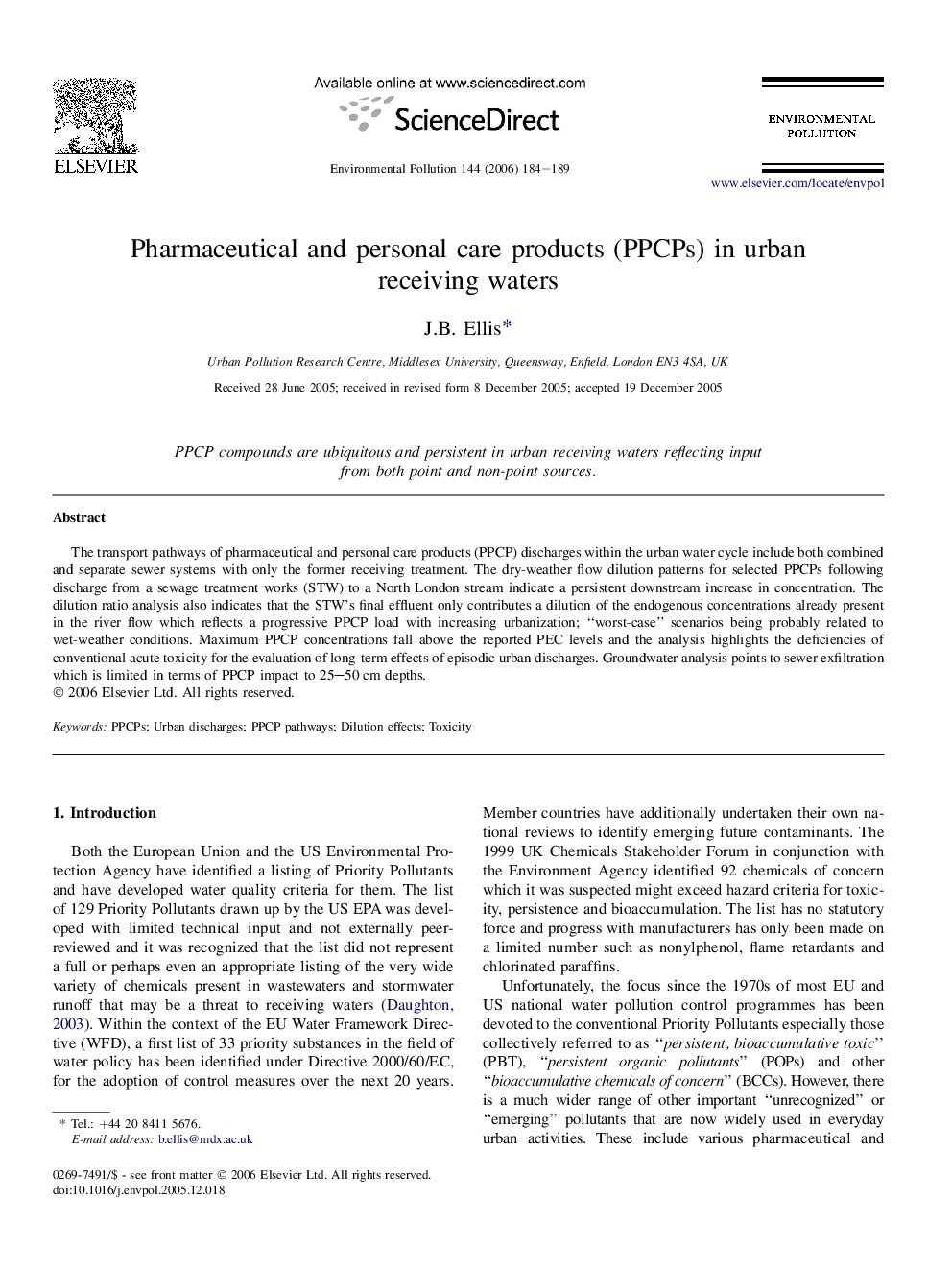| Article ID | Journal | Published Year | Pages | File Type |
|---|---|---|---|---|
| 4427948 | Environmental Pollution | 2006 | 6 Pages |
The transport pathways of pharmaceutical and personal care products (PPCP) discharges within the urban water cycle include both combined and separate sewer systems with only the former receiving treatment. The dry-weather flow dilution patterns for selected PPCPs following discharge from a sewage treatment works (STW) to a North London stream indicate a persistent downstream increase in concentration. The dilution ratio analysis also indicates that the STW's final effluent only contributes a dilution of the endogenous concentrations already present in the river flow which reflects a progressive PPCP load with increasing urbanization; “worst-case” scenarios being probably related to wet-weather conditions. Maximum PPCP concentrations fall above the reported PEC levels and the analysis highlights the deficiencies of conventional acute toxicity for the evaluation of long-term effects of episodic urban discharges. Groundwater analysis points to sewer exfiltration which is limited in terms of PPCP impact to 25–50 cm depths.
